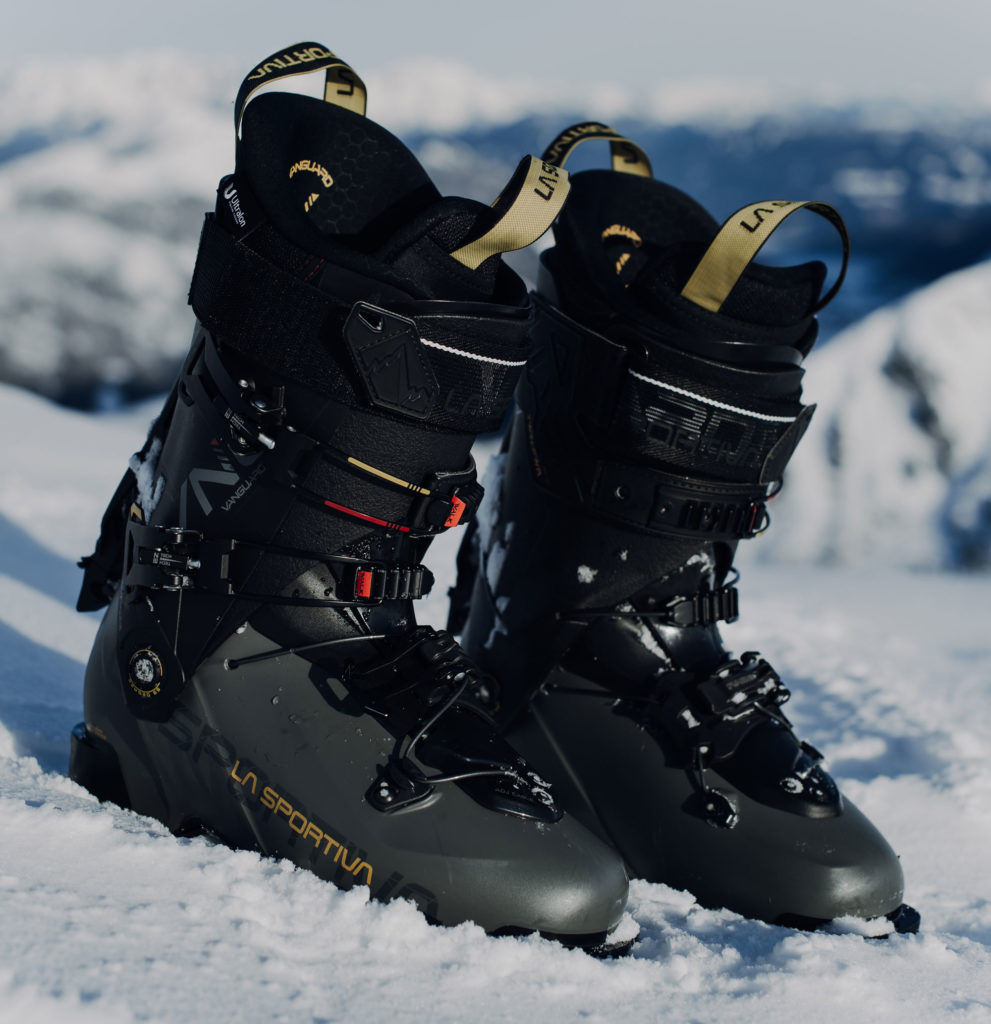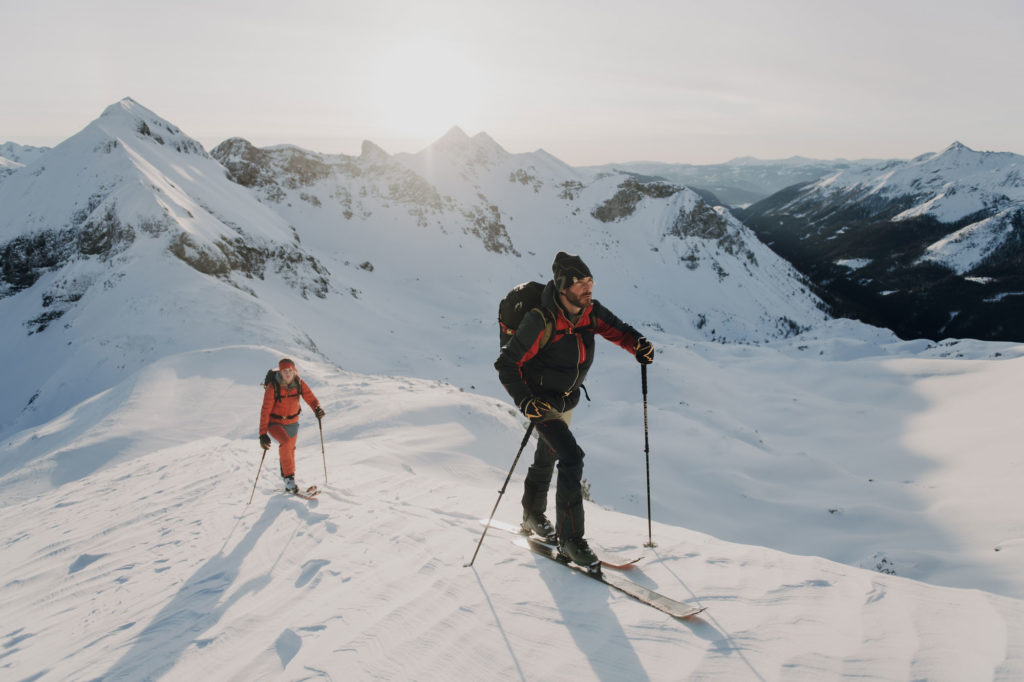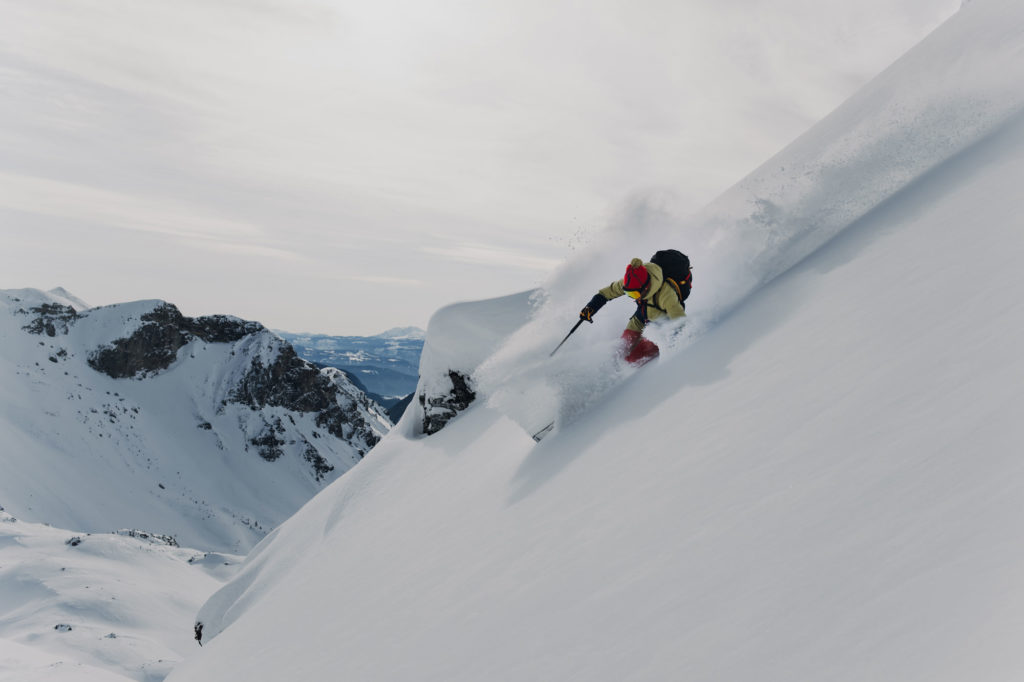- December 15, 2021
Sponsored Content
Tags
Is La Sportiva’s New Vanguard the Future of Touring Boots?
There’s a new touring boot out by La Sportiva called the Vanguard that has the backcountry gearheads all abuzz. After all, it’s not that frequent that something truly innovative emerges amidst all the redesigned carryovers—and the Vanguard happened to come out amidst supply chain woes that have hamstrung nearly every other manufacturer. So what makes this boot so special?
The Vanguard, designed and tested at La Sportiva’s headquarters in a small valley in the middle of Italy’s Dolomites, is 1,370 grams per boot (at a size 27) is positioned solidly in the freeride category—capable of longer tours yet aimed at performance on the descent. But what makes it remarkable is that its shell looks like some kind of futuristic machine—it’s like nothing we’ve ever seen before.
The shell is neither a traditional overlap, which has two cylinders that wrap around your foot and is prized for power transmission, nor a cabrio, which has three pieces and is prized for easy entry and exit. Instead, it is made up of an astounding six pieces, with four on the cuff that scissor into place. When it’s opened up, it almost looks like a mechanical flower.
“A normal boot is made up of two pieces, which means two molds,” said Sandro De Zolt, ski mountaineering product specialist for La Sportiva who helped develop the boot. “Because this one has so many, it cost a lot of money to develop. But La Sportiva encouraged us, because we came up with something new, something different nobody has seen before. La Sportiva is all about the passion.”

The idea is that the multiple layers work together to add stiffness, giving the boot a more progressive flex and more lateral stability without any one single pressure or deformation point. It’s also extremely dexterous in walk mode, with 63 degrees range of motion; the multiple tongues, for lack of a better word, are designed to move in tandem with your natural stride. Then when buckled, they lock into place and work together to provide a stiff, secure skiing platform. “You have not just one layer of plastic, but two layers that work together to disperse energy. It has a pretty rigid flex,” De Zolt said. Cable closures and a powerstrap offer lightweight, uniform snugness.
De Zolt, who is also a mountain guide and a ski instructor, is always challenging the R&D staff into creative thinking. “We think constantly about making something better than what is the state of the art, to come up with a new idea,” he said. “My job in all of this is like writing a letter to Santa. I’m telling the guys in the R&D department, ‘I want something lighter that skis and moves well and is warm.’ And they came up with this.”
The other notable innovation De Zolt spearheaded was incorporating harder plastic into the toe and heels, where the boot interfaces with the binding. Typically, manufacturers use the same lightweight Pebax plastic for the toe and heel as the rest of the boot, which is so soft that it can get pretty beaten up during a winter of scrambling over rocks and bootpacking up scree fields.
“Our designer molded the toe and heel of the shell with the same polyurethane material, which is made from castor oil, that’s used in an alpine ski boot. We are the first to have this kind of technology.” Not only does that innovation help the consumer by making the boot more durable, it also helps the environment. “For us, responsibility means our product lasts longer. If a product has a longer life, people need less of it, and that’s more responsible.”

The other major benefit of the boot is comfort: it splays open to invite your foot in (all those cuff pieces scissor closed automatically for an easy transition from walk to ski) and boasts a roomy toe box. “It will allow you to enjoy the day in a ski boot,” De Zolt said. “When I was young, we used to say the best part of the ski day was to take the boots off at the end. But with this one, you can keep the boots on—for an appetizer or après ski, why not.”
So what’s next for this boot? Do they see it sparking a whole new category of shells? In the immediate future (read: he’s tinkering on them now), De Zolt said he sees the Vanguard inspiring models with a similar shell that diverge down two paths. There will be one that goes the direction of light and fast for the uphill, and another that goes farther down the path of performance for downhill.
“In the meantime, for sure I will keep dreaming of the perfect boot that’s very light that skis very well,” he said. “But we need some new materials and tech to do that. We will see.”
Tech Specs
Men’s: $899, 1,370 grams/boot @ 27, 130 flex, 102.5 mm last
Women’s: $899, 1,270 grams/boot @ 24, 115 flex, 102.5 mm last
Click here for Powder Cloud’s review of the boot.



